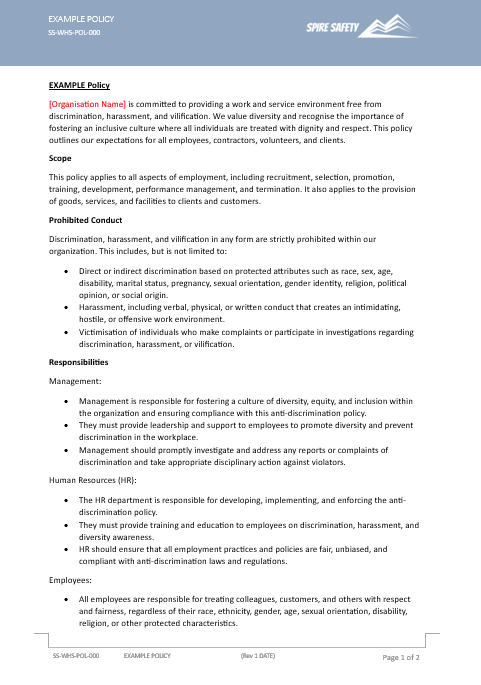Free Cold Conditions Policy Template
Download our free Cold Conditions Policy Template:
*For internal use only. Not for resale or redistribution. By downloading, you agree to our Free Resources Licensing Agreement.
Purpose of a Cold Conditions Policy
A Cold Conditions Policy outlines the framework and expectations related to working in cold conditions. These policies aim to create a safe and healthy working environment by managing the risks associated with cold conditions, ensuring the well-being of employees, and minimizing potential hazards.
How to Use
This Cold Conditions Policy template should be customised by a competent person, signed by a top-level manager (e.g. the director), and displayed in the workplace or provided by other means (e.g. website). It should also be communicated to new workers as part of their induction or onboarding process.
This document is a template only and it must be customised for your business. Other aspects that need to be considered include ensuring that:
- Relevant legal requirements have been met,
- Workplace specific risks are identified and managed, and
- Workers are consulted with during the customisation / review process.
When to Use
This document should be displayed in a prominent area or uploaded to your website/ centralized document system. You should also use it during employee inductions, and you may wish to refresh your workers on the contents of the policy periodically as part of a safety meeting or refresher training.
Who Should Use
This document should be endorsed with the signature of the appropriate top-level manager (such as a director). It can be used by your Safety Advisor, Project Manager, or other Manager/s to communicate the requirements to workers (including new workers).
Legal Considerations
Generally, under the WHS legislation, there is no specific legal requirement to have or display a Cold Conditions Policy. However, it is best practice. It can help meet general legal duties, including:
s(19)(3)a WHS Act – Duty to Provide a Safe Working Environment
Workers also have legal responsibilities, including:
- s(28) WHS Act – Duty of workers:
- Taking care of yourself
- Taking care of others
- Following procedure
- Following instruction
FAQ
What is a Cold Conditions Policy?
A Cold Condition Policy is a set of guidelines implemented by organizations to ensure safety during cold weather. It outlines measures to protect individuals from risks like frostbite, hypothermia, and slippery surfaces.
Why are Cold Condition Policies important?
Cold Condition Policies are important because they help prevent cold-related injuries and illnesses by providing clear guidance on how to mitigate risks during cold weather.
What measures are typically included in Cold Condition Policies?
Cold Condition Policies may involve monitoring weather, providing suitable clothing, adjusting schedules, training on risks, and establishing emergency protocols.
Did you know?
Did you know that the concept of Cold Condition Policies has ancient roots? In ancient Rome, Emperor Augustus implemented a “Lex Frigida” (Cold Law) which required public officials to provide firewood for warming stations during the winter months to protect citizens from the cold.
Article Sources and Further Reading
- The Complete Guide to WHS Policies and Procedures in Australia (Spire Safety) <https://spiresafety.com.au/resources/guide-to-whs-policies-and-procedures/>
- What is a WHSMS (Work Health and Safety Management System)? (Spire Safety) <https://spiresafety.com.au/resources/what-is-a-whsms/>
- Work Health and Safety Policy (Safe Work NSW) <https://www.nsw.gov.au/enterprise-investment-trade/policy/work-health-and-safety>

